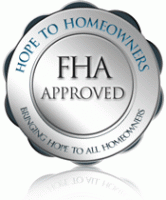Boston downtown condos

Are you curious to find out how Boston Midtown high rise condos and Boston Beacon Hill condo projects find FHA approval?
Below is a list of project eligibility requirements:
- 1.Beacon Hill condo projects must consist of two or more units.
2. Boston Midtown condo projects must be covered by hazard and liability insurance and, when applicable, flood and fidelity insurance
3. Right of first refusal is permitted unless it violates discriminatory conduct under the Fair Housing Act regulation.
4. No more than 25 percent of the Boston high rise condo project total floor area in a project can be used for commercial purposes. The commercial portion of the project must be of a nature that is homogenous with residential use, which is free of adverse conditions to the occupants of the individual condominium units.
5. No more than 10 percent of the downtown Boston condo units may be owned by one investor. This limitation also applies to developers/builders that subsequently rent vacant and unsold units. For Beacon Hill condominium projects with ten or fewer units, no single entity may own more than one unit within the project; all units, common elements, and facilities within the project must be 100 percent complete.
6. No more than 15 percent of the total units can be in arrears (more than 30 days past due) of their Boston condominium association fee payments.
7. At least 50 percent of the total units must be sold prior to endorsement of a mortgage on any unit. Valid presales include:
• Copies of sales agreements and evidence that a mortgagee is willing to make the loan
• Evidence that units have closed and are occupied;
or
• Information from a developer/builder that lists all of the units already sold, under contract, or closed (e.g. a spreadsheet, chart, or listing used for the companys own tracking purposes) that is accompanied by a signed certification from the developer (Attachment F). 1 Secondary residences can only be included if it meets the requirements.
8. Owner-occupancy Ratios: At least 50 percent of the units of a project must be owner-occupied or sold to owners who intend to occupy the units.2 For proposed, under construction or projects still in their initial marketing phase, FHA will allow a minimum owner occupancy amount equal to 50 percent of the number of presold units (the minimum presales requirement of 50 percent still applies). 2 Units sold to owners who intend to occupy the units must follow the requirements of a valid presale.
9. Legal phasing is permitted for condominium processing. It is recommended that developers submit all known phases for initial project approval. FHA will not accept market phasing in lieu of legal phasing. For vertical buildings, legal phasing is acceptable if:
a. The floors are legally phased in groupings of no less than five floors;
b. At least a temporary certificate of occupancy has been obtained and all common areas and amenities have been completed
c. A third party completion bond has been obtained.
For purposes of calculating the owner-occupancy percentage and FHA concentration:
a. On multi-phased projects the owner-occupancy percentage is calculated on the first declared phase and cumulatively on subsequent phases if the ownership of the condominium project remains the same.
b. If multi-phasing includes separate ownership per phase, each phase is calculated individually.
c. In single-phase condominium project approval requests, all units are used in the denominator when calculating the 50 percent owner-occupancy percentage.
10. FHA will display the concentration information for each approved condominium development on the approved condominium listing, which can be found on both FHA Connection and on the public website at www.hud.gov.
The concentration level will be based on case numbers assigned on units in a project; FHA will not issue new case numbers once the 50 percent concentration level (plus a small tolerance to accommodate for some fall-out) has been reached in any particular development.
a. Projects consisting of three or fewer units will have no more than one unit encumbered with FHA insurance.
b. Projects consisting of four or more units will have no more than 30 percent of the total units encumbered with FHA insurance.
c. Calculation of the level of FHA concentration in a project declared with legal phases will follow the same methodology as owner-occupancy, described above.
11. Mortgagees must review the homeowners association budget (the actual budget for established projects or the projected budget for new projects) for all projects. This review must determine that the budget is adequate and:
6 Includes allocations/line items to ensure sufficient funds are available to maintain and preserve all amenities and features unique to the condominium project;
• Provides for the funding of replacement reserves for capital expenditures and deferred maintenance in an account representing at least 10% of the budget
• Provides adequate funding for insurance coverage and deductibles (see Section VI, Insurance Requirements).
In cases where the budget documents do not meet these standards, the mortgagee may request a reserve study to assess the financial stability of the project. The reserve study cannot be more than 12 months old. When reviewing the reserve study, consideration must be given to items that have been replaced after the time that the reserve study was completed.
In lieu of the actual budget documents, mortgagees may request and rely on Fannie Mae form 1073a, Analysis of Annual Income and Expenses – Operating Budget, executed by an authorized representative of the seller/servicer, owners association, or management agent.